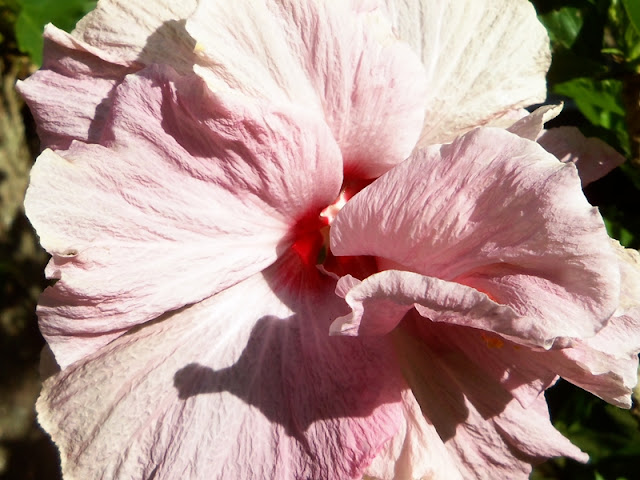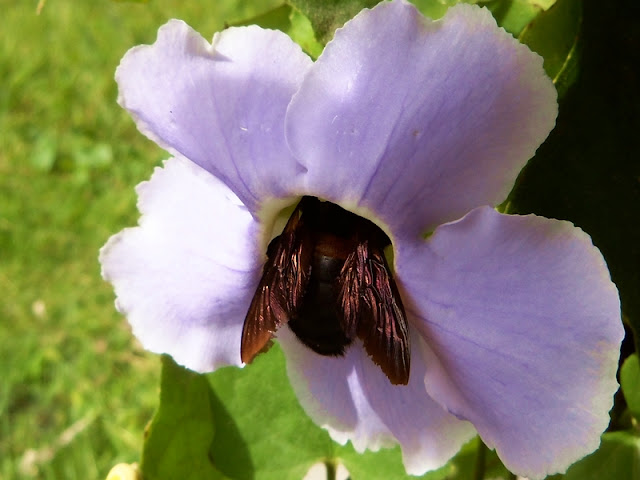As the wanting of photography is growing on me, I have to asses which type of photography would I choose that would really make me feel as if this is "it". Its like going to the same coffee shop or restaurant everyday. Though you may choose a different type of coffee or order another menu the next day, after a while when you get the hang of it, you do have in your mind the menu or the coffee that you enjoy most. The same goes with music preference, fashion preference, art preference, partner preference and so many other preferences in life. Many of us choose to settle with the one we are most comfortable with and that helps define who we are.
As an artist, I've always liked colors, the vivid colors of summer and I remember when I was a little kid, I had a lot of fascination for nature. A cousin once called me "tree huger". So its no surprise to me that I was fascinated with natural views but its kinda frustrating (to me) that we live in some suburban town and there's not really much room in there for natural beauty. I know, some people out there would imagine a scene out of a National Geographic or Discovery Channel program with stunning visuals and everything-the works but that's just not feasible since I'm no pro and never mind the the budget to travel far away and the equipment they have to capture such stunning imagery. We had road trips a few times but we don't always stop just for me to capture the best scene and my digital camera (like most digital point and shoot cameras) has a low dynamic range and you can't get the best picture from afar.
So what I did was try and capture subjects at short range and since my camera is 14 megapixels, the results were actually very good, paired up with Kodak's Ektachrome color mode that gives the images a warm vivid feel. I tried taking shots of flowers we had in our garden at close range and I was impressed. So I decided that I should just exploit the little things around me and try to make the best imagery out of flowers since they are widely available close by and are pretty colorful. I consider myself a "flower child". I made this Windows 7 theme, featuring my flower power photography. Flowers of the Seasons Themepack
Occasionally, I wouldn't zoom at them too close and that is to allow the background to support the main subject or show other potential subjects but it must still have enough composition to expose the main thing more than anything else. Sometimes, there could be multiple subjects like the picture of the roses. Naturally, their bright red color would be imposed over the gray color of the concrete pavement.
Since our garden isn't very grand, I take picture of other people's plants too. The trees behind the yellow bells was to try and make it look like as if it were taken in a forested place plus the sky was to add more drama and give it that summer feel. I took these pictures on a sunny day with the good ol' sunlight bringing the perfect lighting so these flowers would have the best of their color. I call that summer magic.
I also experimented on cropping the images to eliminate all the distractions and expose the texture of the flower so that its full beauty will be revealed. I always set my camera to the full 14 megapixel capture mode to achieve this.
Another stuff I came up with was to flood the picture with floral beauty. This applies if the flowers are too small and would have too little detail on their own. This is the case with the ixora flowers that we call santan.
Distractions sometimes help too but they usually have to be blurred. I got these leaves and twigs closer to the lens of my camera than the yellow bouganvilla but good thing my camera auto-blurs them. It also auto-blurs the plants behind the flower. The yellow-green color of the blurred leaves actually enhance the picture cause it masks the otherwise dark spot behind it. I can imagine this shot not being as good if the blurred out leaves weren't there. I took this early in the morning and it may look like as if this is some wild flower cause there's clearly no man made thing lingering around. This is one of my favorite shots ever.
Of course, its also fun to take pictures of flowers after a rainy day cause water droplets and moisture add more art into their delicate texture. We've seen pictures and wallpapers of moisture on the surface of leaves and flowers that were zoomed many times but that's just beyond what my camera can do. Those were taken by professionals with high power DSLR cameras with those fancy lenses that can blur everything around the focus. Polishing and retouching with Adobe Photoshop even makes them more pro. Another difference here from those shots taken on sunny days is the lighting. One simple trick I do is take the shot of the flower against a background with darker color and I do not use flash with that cause that would ruin the natural lighting in many cases. The color of the flower is still well imposed over the background. I took inspiration from the Dreamgarden Theme found in Microsoft's personalization website where the flowers don't have much exposure to sunlight.
In some cases, I thought that the green leaves behind would just drown the color of the flower. I solved this either by lowering the picture's tint (that eliminates the green a bit and adds more magenta) or by using the color curves tool that has a graph where you can manually lower the RGB colors. I this case, I lowered the green a bit, increased the blue (that makes the leaves bluish) and the red (adds more emphasis on the orange). I now use Paint.NET and Photoscape to make these adjustments. Photoshop of course has similar tools to achieve the same effect but are found deeper down its inventory and its generally more resource-consuming.
So that wraps it up. Even if you have limited tools like myself, try and experiment on the little things you can find close by. You don't need to have the best kit or travel somewhere to be a good photographer. Its true, it all goes better when you travel somewhere with a better camera. You get to have a much wider range of subjects, add more experience under your belt and bag more memories along the way but we all start small. Look around you, look at the little things, pause for a moment and think of a way you can appreciate them better and you might just discover the simple yet essential things. If life gives you limited options, make the best out of it!












Great stuff man. I wish I too could be part of something like that for a cause.
TumugonBurahin